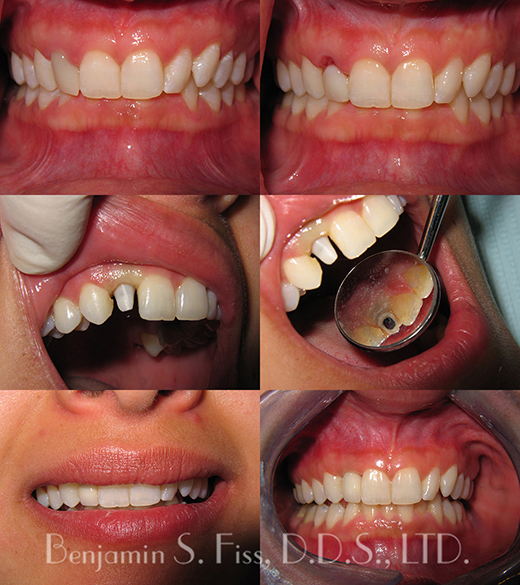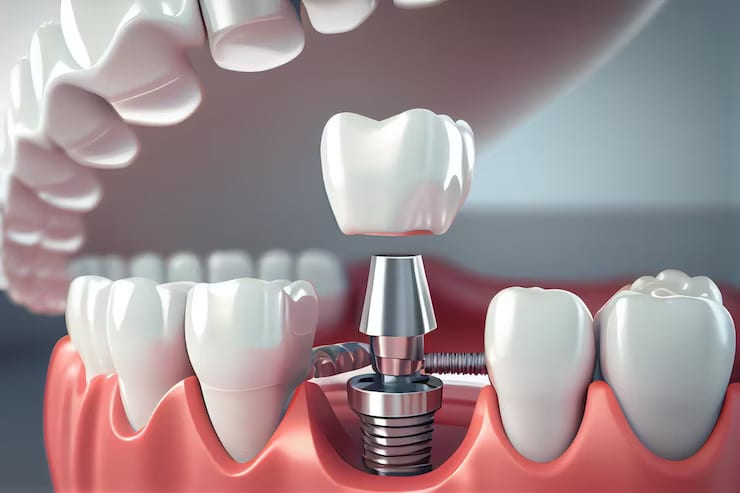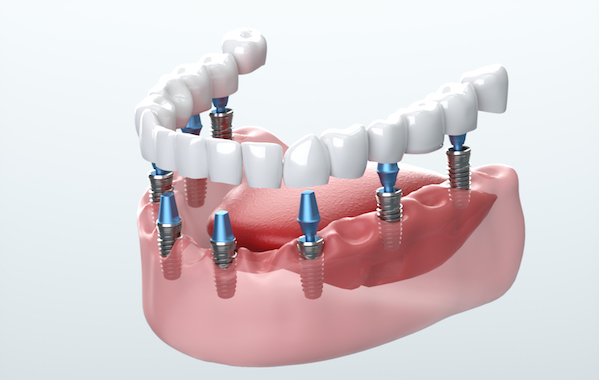Dental Center Pataskala OH Dental Implant Types: Choosing the Right Solution
Dental Center Pataskala OH Dental Implant Types: Choosing the Right Solution
Blog Article
Pediatric Dentist Granville OH The Benefits of Dental Implants: Why Choose Them?
Dental implants have revolutionized restorative dentistry, providing a reliable alternative to conventional strategies for changing missing teeth. The integration of dental implants with the jawbone is a fancy organic course of generally recognized as osseointegration. This her response course of not solely anchors the implant securely but also helps keep jawbone health, stopping the discover this bone loss typically related to Dental Clinic Granville OH missing teeth.
The dental implant itself is usually made from titanium, a biocompatible material that the body accepts. When an implant is positioned in the jaw, it's designed to carefully mimic the foundation of a natural tooth, which is essential for efficient integration. The titanium floor encourages the growth of bone cells, enabling the jawbone to bond with the implant over time.
Premier Dental Pataskala OH Dental Implant Procedures

Several levels represent the osseointegration course of. Initially, when the implant is surgically positioned into the jaw, a healing period is required for the encircling bone to start out reworking. During this time, the bone grows around the implant, making a strong and steady basis. This therapeutic time can differ, sometimes lasting several weeks to a few months, depending on numerous factors, including the person's overall health and the specific location of the implant.
The role of surrounding bone quality is essential. High-density bone usually provides a better setting for osseointegration compared to lower-density bone. Specialists usually evaluate the standard and amount of bone before the implant placement to determine the best course of action, which can involve bone grafting procedures in circumstances of insufficient bone quantity. Grafting enhances the chances of successful integration by making a more robust base for the implant.
The organic mechanisms behind osseointegration involve various cellular actions. Osteoblasts, the cells responsible for bone formation, migrate to the implanted area and begin to put down new bone materials. Simultaneously, the surface of the titanium implant undergoes changes that facilitate this bonding process. Some newer implant designs incorporate floor modifications to additional improve biological integration.
Premier Dental Hartford OH Step-by-Step Guide to Dental Implant Procedures
Throughout the mixing process, the position of blood supply can't be overstated. An sufficient blood supply nourishes the bone and ensures the right functioning of the cells concerned within the healing and integration process. Improved blood move leads to faster therapeutic and higher outcomes, which is why surgical techniques and aftercare usually prioritize maintaining or enhancing blood circulation to the site of the implant.
Improvements in surgical methods also contribute significantly to the success charges of dental implants - Dentist Hartford OH. Minimally invasive strategies and guided implant surgery enable for extra precise placement of implants, reducing trauma to the surrounding tissues and doubtlessly rushing up the healing time. The much less trauma experienced by the jawbone can lead to a more favorable setting for osseointegration
Dental Implants Pataskala OH Full Mouth Dental Implants: An In-Depth Overview

How a person maintains their oral hygiene after receiving an implant can considerably affect integration success. Proper care across the implant site helps prevent infections, which might disrupt the healing course of. Regular dental check-ups are also important to observe the health of each the implant and the encircling gum and bone tissues.
Long-term success with dental implants is usually linked to factors corresponding to life-style decisions. Patients who smoke or have uncontrolled diabetes might experience decrease charges of osseointegration. These conditions intrude with therapeutic and blood provide, making it important for people contemplating implants to discuss their health history with their dentist.
After the profitable integration of the implant, the next section includes inserting the prosthetic restoration, corresponding to a crown. The last restoration must match comfortably and functionally integrate with the prevailing dentition. Family Dental Clinic Hartford OH. Proper alignment and occlusion play important roles in how properly the implant will perform over time
Dentists Pataskala OH Step-by-Step Guide to Dental Implant Procedures
Dental implants present a long-lasting solution that helps protect the integrity of the jawbone. When a tooth is misplaced, the bone that once anchored its root begins to deteriorate. Implants stimulate the bone equally to natural teeth, triggering the jaw to maintain its density and power. This stimulation is essential for preventing the sunken facial appearance that usually accompanies tooth loss.
In conclusion, the mixing of dental implants with the jawbone includes a complex interplay of organic and mechanical elements. Understanding the osseointegration course of can empower people to make knowledgeable choices about their dental health. By appreciating the significance of choosing a talented dental professional and adhering to post-operative care, patients can obtain optimal outcomes and luxuriate in restored perform and aesthetics for a few years to come.

- Dental implants mimic the structure of natural teeth and supply a steady foundation by integrating with the jawbone via a process known as osseointegration.
- The biocompatibility of titanium, generally used for dental implants, plays a crucial position in promoting profitable bonding with bone tissue.
- Osseointegration typically begins within a couple of weeks post-surgery, with the implant surface steadily turning into enveloped by bone cells.
- The mechanical stability of implants is enhanced by their surface roughness, which inspires bone progress and improves the combination process.
- Immediate loading of implants may be possible in certain circumstances, relying on bone density and the patient’s general dental health.
- Over time, the jawbone responds to the presence of an implant by undergoing reworking, contributing to the long-term success of the procedure.
- Factors corresponding to oral hygiene, smoking habits, and systemic medical conditions can considerably impression the combination process of dental implants.
- Regular follow-ups and imaging methods, similar to X-rays, can help monitor the success of osseointegration and detect potential problems early.
- The preservation of surrounding bone structure is enhanced by the stimulation provided by dental implants, which can help prevent bone loss in adjacent areas.
- Successful integration not solely restores functionality to the tooth but also contributes considerably to the aesthetics of the patient's smile and facial structure.undefinedWhat are dental implants and the way do they work with the jawbone?undefinedDental implants are titanium posts surgically inserted into the jawbone to function artificial tooth roots. Once placed, they undergo a course of known as osseointegration, the place the jawbone naturally fuses with the implant, making a steady foundation for the replacement tooth.
How does osseointegration occur?undefinedOsseointegration is a organic process where bone cells grow and connect to the surface of the dental implant. This usually takes several months, during which the implant turns into firmly anchored within the jawbone, making certain power and stability for the artificial tooth.
Dental Center New Albany OH Dental Implants: Services and Expertise
What elements affect the success of dental implant integration?undefinedKey components embody the quality and quantity of the jawbone, the patient's total health, and oral hygiene practices. Adequate bone density is crucial, as insufficient bone could impede successful integration.
Is the pain throughout dental implant placement significant?undefinedMost patients report minimal discomfort during the process, as native anesthesia is used. Post-operative pain is usually manageable with over-the-counter pain aid medications, and most discomfort subsides inside a few days.
How long does the integration course of take?undefinedTypically, osseointegration takes about three to 6 months. However, this could vary primarily based on individual healing processes and the particular conditions of the jawbone.
Can anyone get dental implants?undefinedMost individuals are candidates for dental implants; nonetheless, certain conditions corresponding to uncontrolled diabetes or severe gum disease may affect eligibility. A thorough analysis by a dental skilled is necessary to determine suitability.
Dentists Columbus OH Common Dental Implant Problems and How to Avoid Them
What could be done if there isn't enough jawbone for integration?undefinedIf there is insufficient bone, procedures like bone grafting can be performed to enhance the jawbone. Once the graft heals, dental implants can then be positioned, permitting for successful integration.
Are there long-term care concerns after getting dental implants?undefinedYes, sustaining wonderful oral hygiene is significant for the longevity of dental implants. Regular dental check-ups and cleanings also help prevent issues and ensure the ongoing health of the encompassing bone and gum tissue.
Orthodontics New Albany OH Dental Implants Cost Breakdown: What You Need to Know
How do dental implants compare to different tooth replacement options?undefinedDental implants are often considered superior to dentures and bridges as a result of their sturdiness, stability, and the preservation of jawbone health. Unlike different choices, implants fuse with the jawbone, which helps maintain bone density and facial structure.
Report this page